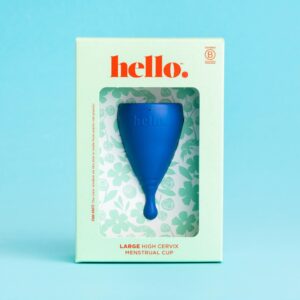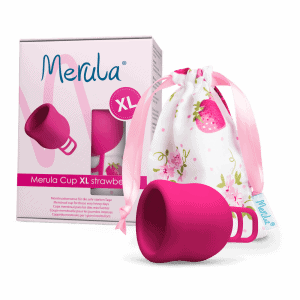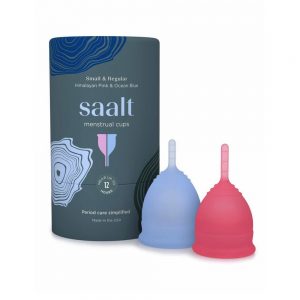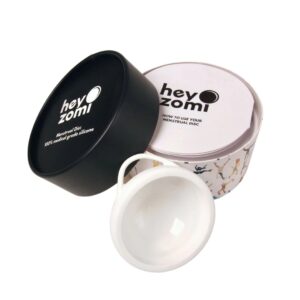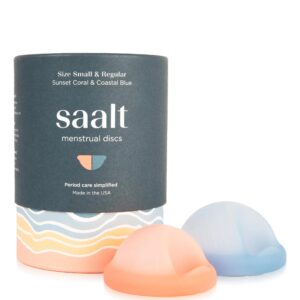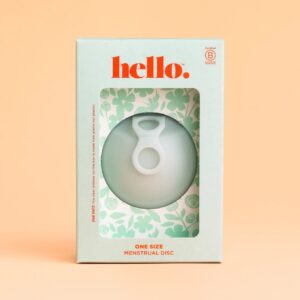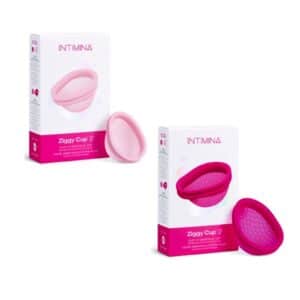Menstrual Cup Sizing - which size cup do you need?
This article is for anyone who is confused about which size menstrual cup to buy.
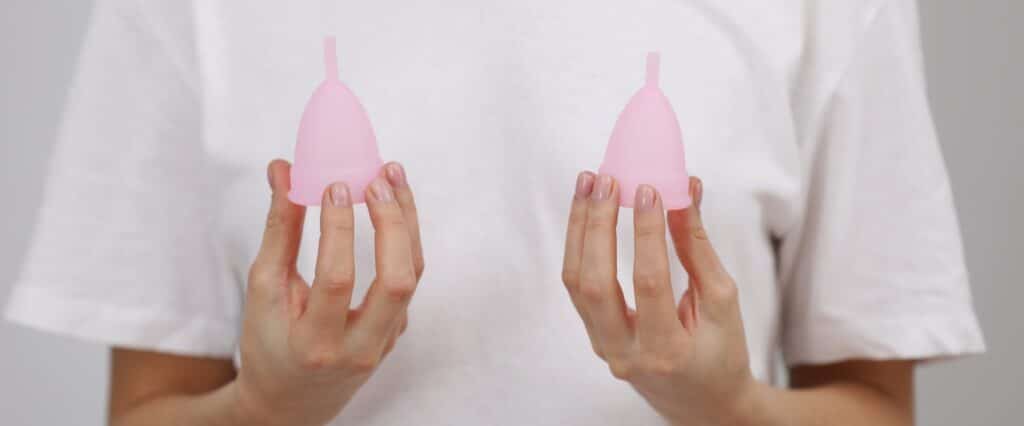
While each brand of menstrual cup may differ slightly, when it comes to sizing your menstrual cup, there are five main factors to consider.
5 Menstrual Cup Sizing Tips
While these menstrual cup sizing tips will help in most cases, we always recommend first checking the sizing guidelines for the specific brand of cup that you intend to purchase.
1. Your Age and Stage
At the most simplistic level of cup sizing, the following guidelines usually apply:
- If you are over the age of 30 and have had a vaginal birth, most brands will recommend you select the large model cup.
- If you are under 30 and have not had a vaginal birth, you will usually select the smaller model cup.
- If you are under 30 years of age and have had a c-section, consider the smaller size cup.
- If you are over 30 years of age and have had a c-section, consider the larger cup.
As we age and/or give birth vaginally, our hips begin to widen and our pelvic floor muscles lose some of their elasticity. This causes the vaginal canal to become a little more roomy, making it more likely that a smaller cup may not seal correctly, and slip or leak.
While these are the most often used guidelines, occasionally, you may need to consider other factors before determining your correct cup size.
2. Your Pelvic Floor Strength
If you are one of those very dedicated people who heeded the advice of your care giver to ‘regularly do your kegel exercises’!, or if you regularly undertake Yoga or Pilates routines, you may have developed particularly strong pelvic floor muscles. In this case, many menstrual cup manufacturers will recommend you select the smaller size cup – regardless of your age or whether you have delivered vaginally or not. An average to firm cup is also best for very fit individuals as the strong pelvic floor muscles will be less likely to crush the cup and result in leaking.
If your pelvic floor strength is somewhat weak, or if you have any degree of incontinence, you will most likely need a larger diameter cup, or a menstrual disc which does not rely on suction to stay in place.
3. The Height of Your Cervix
Before choosing any menstrual cup, we highly recommend that you check the position/height of your cervix. If you have a low cervix (short vaginal canal), then you may find that a shorter cup provides a better fit and is less likely to fall out. Conversely, if you have a high cervix (long vaginal canal), then you will most likely find a longer model more suitable, as it will be easier to reach.
4. Are You a Teenager or Not Had Penetrative Sex?
Most brands will recommend the smaller size menstrual cup for teenagers or women who have not had penetrative sex. This is due to having a potentially un-stretched hymen and/or tighter pelvic floor muscles. A smaller cup is generally recommended for young women wanting to reduce the risk of stretching their hymen. At this point, it is worth mentioning that the hymen can sometimes be torn or stretched while participating in various forms of sport and also when using tampons. In some instances a woman may in fact be born without a hymen at all. An un-stretched hymen may make the insertion of larger cups more difficult and sometimes painful. The hymen and pelvic floor tone will begin to stretch and weaken as a woman ages, even if she has not had penetrative sex. Once this happens, a larger cup may be a suitable option.
There is a great selection of Teen Menstrual Cups available that are softer and smaller for younger users.
5. Your Level of Flow
While even the small size menstrual cups will usually hold a substantial amount of menstrual fluid in comparison to tampons, women with exceptionally high period flows, may wish to use a larger volume cup. So, if you are under 30 years of age, have not had a vaginal birth, but do have a very high level of menstrual flow, you may wish to select a larger model cup.
The Ruby Cup is one brand which specifically recommends choosing a size based on your level of flow combined with your cervix height, rather than your age or stage of life.
Menstrual discs are also an excellent option for a very heavy flow as they hold an average of 50ml, which is almost double that of most menstrual cups, and more than 5 super tampons.
Cup Brands Offer Varying Sizes for Different Needs:
-
Hello High Cervix Cup
$ 49.95Original price was: $ 49.95.$ 44.95Current price is: $ 44.95.Rated 5.00 out of 5
In most cases, the above suggestions will solve any menstrual cup sizing questions that you may have. However, if you are still unsure what size cup to choose, please do not hesitate to contact us; we’re more than happy to assist. Some brands also offer Duo Box’s which contain two different sized cups. These are more economical and are great if you still can’t decide what size to try.
3 Menstrual Disc Sizing Tips
The vast majority of menstrual disc brands are available as a one size fits most. They state that the disc will conform to any anatomy and that no sizing, means no guessing which size is best. However, everyone’s anatomy is different, and while most people may have success with a ‘one size’ disc, there will be some people who struggle with it. When choosing a menstrual disc size, some factors to consider are:
1. The Height of Your Cervix
If you have a low cervix, you may want to consider a smaller sized disc, like the small Saalt disc. There is less room between the vaginal opening and your cervix, so you may find a smaller diameter and depth disc more comfortable.
If you have a high cervix, you may want to choose a larger disc. Room is less of an issue for you, and if the disc happens to travel upwards a little, a larger one will be easier to locate and remove. A disc with a removal tab, such as the Hello Disc is also a good option for people with a high cervix.
2. Your Level of Flow
If you have a light to average level of flow, a smaller sized disc will probably be all you need.
If you have an average to heavy flow, you may like to go for a larger disc which will have a bigger capacity.
3. Vaginal Space
This is not something you are likely to know until you have tried a menstrual disc. It will become more obvious if your anatomy favours a smaller or larger disc once you have tried one and perhaps experienced insertion issues.
If you find that while trying to insert a disc, it seems to ‘spring’ out of place and feels like there just isn’t enough room for it to fit, you may need to consider a smaller size.
If you can insert the disc without trouble but find that it continually dislodges from behind the pelvic bone, you may need a larger disc.
If you are having trouble inserting your disc, or if you are experiencing leaking, rule out user error before purchasing a different disc. There are 3 common reasons why your menstrual disc might not be positioned properly:
- You have not placed the disc far enough in to be sitting behind the cervix. Try inserting your disc while squatting. This position helps you position the disc deeper, making it more likely that it is positioned behind the cervix in the vaginal fornix.
- Your disc is hitting the front of your cervix. When inserting, try to angle your cup down towards the tip of your tailbone, rather than at an upwards angle. You are trying to ‘scoop’ your cervix into the disc.
- You may not have the front rim properly tucked behind your pubic bone. Feel for your pubic bone before inserting the disc, so you know where it is located. Once the disc is inserted, push the front rim up as far as you can to ensure it is tucked in place.
Disc Brands for Different Needs:
-
Hey Zomi Menstrual Disc
$ 55.00Original price was: $ 55.00.$ 50.00Current price is: $ 50.00.Rated 4.36 out of 5 -
Hello Disc
$ 59.95Original price was: $ 59.95.$ 54.95Current price is: $ 54.95.Rated 4.84 out of 5
Frequently Asked Questions:
The most common signs that a menstrual cup is too small are:
- Consistent Leaking
- The cup slipping out of the vagina
- The cup not suctioning and sealing properly when fully opened
- The cup moving around into different positions (ie. sideways)
- You have trouble reaching your cup to remove it
The most common signs that a menstrual cup is too big are:
- Difficulty or pain while inserting the cup
- Leaking
- Cramps or pain
- Inability to empty your bladder completely
- The cup doesn’t pop open fully when inserted
- The cup slips or sticks partially out of the vagina
Age and stage of life are often the main considerations when choosing a menstrual cup size. Usually we would recommend the following:
- Under 20 years old – Teen sized cup
- 20-30 years old – Smaller models
- 30+ years old – Larger models
This is just a guide and it is important to consider other factors such as cervix height, pelvic floor strength, and your level of flow.
The Merula cup is considered a ‘one size’ fits most cup. It is high capacity to accomodate light to heavy flows and it has a ladder stem to suit low to high cervix positions. However, most menstrual cup brands come in a variety of sizes in order to fit different anatomies.
Menstrual Discs are typically considered a one size fits most product.
Menstrual discs usually come in ‘one size’ fits most. A disc stays in place by sitting behind the pubic bone rather than relying on suction. Some brands offer two sizes, with the smaller one being particularly good for people who use mini tampons or who have a petite anatomy.
If the cup you have is working, then there is no need to buy a different size.
Usually you should only need one size of menstrual cup. Occasionally someone may use a larger cup on the heavier days of their period and then switch to a smaller cup for the lighter days. This may also be useful if your cervix height changes a lot during your period.
Learn more about using menstrual cups:
How to check Your cervix position
How to Check Your Cervix Position: Low vs. High Cervix Your cervix position is a major factor in which menstrual cup you should purchase Learning how to check your cervix position will help you determine which menstrual cup length and shape to choose, as well as whether or not you should trim the stem. It
10 Tips For Menstrual Cup Leaking
10 Tips for Menstrual Cup Leaking to Prevent Accidents This article is for anyone constantly wondering: “why is my menstrual cup leaking?!” Menstrual cup leaks are more common than you might think, especially when using a cup for the first time instead of a tampon or pad. However, a menstrual cup of the right size
Your Menstrual Cycle: Get To Know Your Flow
Surprisingly, your menstrual cycle can indicate specific underlying health conditions. However, this doesn’t mean that each woman experiences similar symptoms or a similar flow when it comes to their period. Getting to know your own flow may help you determine your health, your stress levels, whether or not you are pregnant, and so much more.




